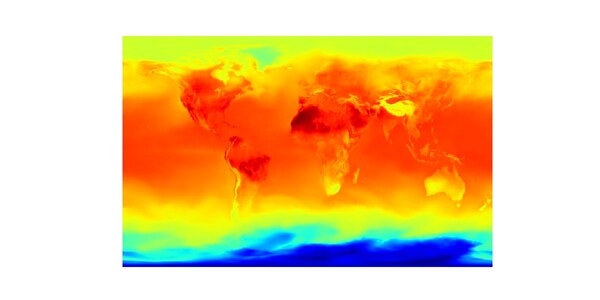Open AI Source Model for Climate & Weather released by IBM & NASA
A new AI foundation model for a variety of weather and climate use cases has been released by IBM (NYSE: IBM) in open-source form to the scientific, developer, and business communities. With contributions from Oak Ridge National Laboratory, the model was developed by IBM and NASA. It provides a flexible, scalable approach to forecasting short-term weather as well as long-term climate projection.
The weather and climate foundation model has a unique design and training regime that enable it to tackle a wide range of applications, as outlined in a paper recently published on arXiv, “Prithvi WxC: Foundation Model for Weather and Climate.”
Local observations can be used to make targeted forecasts, detect and predict severe weather patterns, improve global climate simulations’ spatial resolution, and improve how physical processes are represented in numerical weather and climate models. According to one experiment in the above-identified paper, the foundation model accurately reconstructed global surface temperatures from a random sample of just five percent original data.

NASA’s Modern-Era Retrospective Analysis for Research and Applications, Version 2 (MERRA-2) was used to train this model based on 40 years of Earth observation data. It has a unique architecture that makes it perfect for a range of weather studies because it can be fine-tuned to global, regional, and local scales.
On Hugging Face, you can download the foundation model and two fine-tuned versions that address specific scientific and industrial applications. These are:
- A common meteorological practice is downscaling climate and weather data-inferring high-resolution outputs from low-resolution variables. All of the input data can have varying resolutions, such as temperature, precipitation, or surface winds. A fine-tuned downscaling model is available on IBM Granite’s Hugging Face page. The model can depict weather and climate data at up to 12x resolution, generating localized forecasts and climate projections.
- There are many atmospheric processes associated with climate and weather that are affected by gravity waves, including cloud formation and aircraft turbulence, which are ubiquitous throughout the atmosphere. The current numerical climate models do not adequately capture gravity waves, which leads to uncertainties about how gravity waves may affect climate. In addition to improving numerical weather and climate models’ accuracy and constraining uncertainty when simulating future weather and climate events, this weather and climate foundation model can aid scientists in better estimating gravity wave generation.NASA-IBM’s Prithvi family of models on Hugging Face includes this gravity wave parameterisation model.
“Advancing NASA’s Earth science for the benefit of humanity means delivering actionable science in ways that are useful to people, organisations, and communities. The rapid changes we’re witnessing on our home planet demand this strategy to meet the urgency of the moment,” said Karen St. Germain, director of the Earth Science Division of NASA’s Science Mission Directorate. “The NASA foundation model will help us produce a tool that people can use: weather, seasonal, and climate projections to help inform decisions on how to prepare, respond, and mitigate.”
“This space has seen the emergence of large AI models that focus on a fixed dataset and single use case — primarily forecasting. We have designed our weather and climate foundation model to go beyond such limitations so that it can be tuned to a variety of inputs and uses,” said Juan Bernabe-Moreno, Director of IBM Research Europe and IBM’s Accelerated Discovery Lead for Climate and Sustainability. “For example, the model can run both on the entire earth as well as in a local context. With such flexibility on the technology side, this model is well-suited to help us understand meteorological phenomena such as hurricanes or atmospheric rivers, reason about future potential climate risks by increasing the resolution of climate models, and finally inform our understanding of imminent severe weather events.”
“Our collaboration with IBM and NASA to support the creation of the Prithvi weather and climate foundation model was a key part of our goal to bring advanced computing and data to problems of national importance, in this case, for weather and climate applications, which need continued computational science and model skill improvements to be impactful,” said Arjun Shankar, director of the National Centre for Computational Sciences at Oak Ridge National Laboratory.
To test the flexibility of the model with additional weather forecasting use cases, IBM has already collaborated with Environment and Climate Change Canada (ECCC). A technique called precipitation nowcasting, which ingests radar data as input, is being used by ECCC to forecast very short-term precipitation. Additionally, the team is testing downscaling global model forecasts from 15 km to km scale resolution.
This weather and climate model is part of a broader collaboration between IBM Research and NASA to use AI technology to explore our planet, and is part of the Prithvi family of AI foundation models. The IBM-NASA Prithvi geospatial AI foundation model became the largest open-source geospatial AI model on Hugging Face last year.
The geospatial foundation model has since been used by governments, companies, and public institutions to study disaster patterns, biodiversity, land use, and other geophysical processes.
The foundation model and the gravity wave parameterisation model can be accessed through the NASA-IBM Hugging Face page and the downscaling model can be accessed through the IBM Granite Hugging Face page.